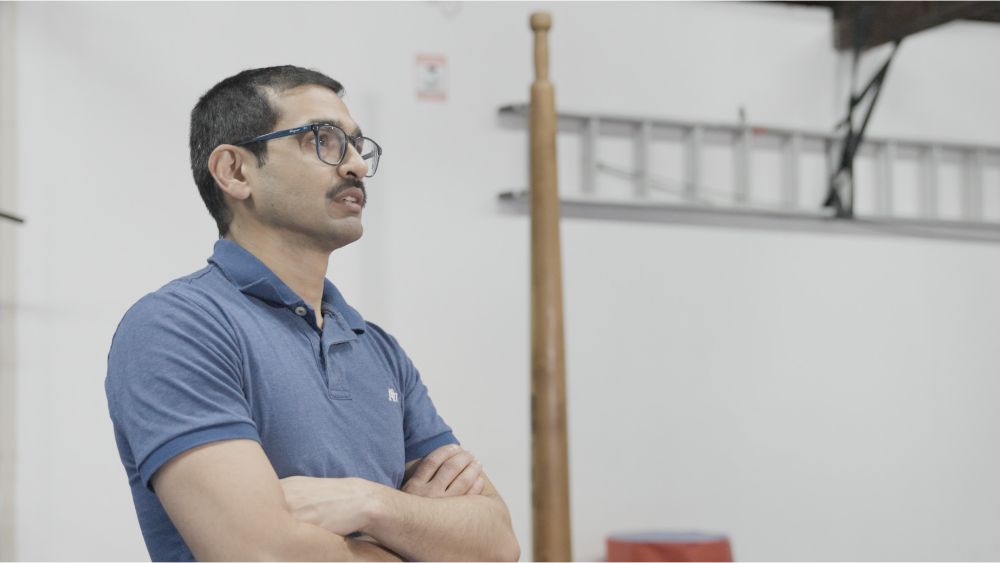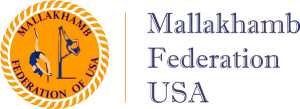Calisthenics, the art of using your body weight for resistance, has gained huge popularity due to its simplicity and effectiveness. On the other hand, Mallakhamb, a traditional Indian form of calisthenics, equally has its own benefits, that not only strengthens the body but also enhances flexibility and balance.
What we will be trying to understand in this article is, would Mallakhamb leg exercises be of any help for the individuals who wish to begin with Calisthenics. We will take a look in particularly at the leg exercises that are perfect for beginners looking to kickstart their calisthenics journey.
Let’s understand both of them one by one, and then the connections between them!
Understanding Mallakhamb
Mallakhamb, derived from the words ‘Malla’ (meaning wrestler) and ‘Khamb’ (meaning pole), is an ancient Indian sport form that involves performing various dynamic movements on a wooden pole. It needs a good balance between weight, muscles, and your body with the pole.
What is Calisthenics?
Calisthenics is a form of exercise that uses a person’s body weight as resistance to perform different exercise movements with the help of fewer or no equipment at all. For example, calisthenic exercises include pushups, crunches, and burpees, which are exercises that can be worked on easily. There are many health benefits to calisthenics, and most people can start them without any specific equipment.
We’ll take a look at how these calisthenic exercises can be made even more effective and easier with the help of Mallakhamb leg exercises, but before that we’ll take a look at which Mallakhamb leg exercises in particular would help in Calisthenics.
What are some Mallakhamb exercises that can help in Calisthenics?
Surya namaskar on the Mallakhamb
The Suryanamaskar, or Sun Salutation, is a part of yoga, and it usually integrates into Mallakhamb. In this Mallakhamb leg exercise you have to stand in front of the pole, raise your arms above your head, and slowly bend forward, placing your palms on the pole. Walk your feet back until your body forms a straight line, resembling a plank. Perform a push-up and then reverse the movement to return to the starting position. This exercise engages your entire body, building strength in your legs, core, and upper body.
Leg Lifts on the Mallakhamb
Leg lifts are yet another effective way to target your lower abdominal muscles and build strength in your legs. Grip the pole with both hands, keeping a comfortable distance between them. Hang from the pole, engage your core, and slowly lift your legs towards your chest. Control the descent to maximize the benefits. This Mallakhamb leg exercise not only strengthens your leg muscles but also improves your overall stability.
Mallakhamb Squats
Squats are the basic in any Mallakhamb leg exercises for strength training routine, and Mallakhamb squats add a unique twist to the traditional squat. Stand facing the pole, grip it with both hands, and lower your body into a squat position. The pole provides stability and support, making it an ideal Mallakhamb leg exercises for beginners. Focus on maintaining proper form, ensuring your knees don’t extend beyond your toes. Mallakhamb squats primarily work your quadriceps, hamstrings, and glutes.
Forward and Side Lunges
Lunges are exceptional for targeting different muscles in your legs. With Mallakhamb, you can perform forward and side lunges to engage various muscle groups. Stand beside the pole and hold it with one hand for balance. Take a step forward or to the side, lowering your body into a lunge position. Push off the ground to return to the starting position. This exercise helps build Mallakhamb leg exercises for strength, stability, and flexibility in your legs.
Mallakhamb Calf Raises
Calf raises are simple yet effective for strengthening the muscles in your calves. Stand facing the pole, hold it with both hands, and rise onto the balls of your feet, lifting your heels off the ground. Lower your heels back down and repeat. Mallakhamb adds an extra challenge by requiring you to maintain balance on the pole, engaging your core and lower leg muscles simultaneously.
Knee Tucks on the Mallakhamb
Knee tucks are an advanced but rewarding exercise for strengthening your core and hip flexors. Hang from the pole, similar to leg lifts, but this time, bring your knees towards your chest as you maintain a controlled rhythm. This Mallakhamb exercises for leg muscles not only targets your leg muscles but also enhances your overall body control.
Why Mallakhamb Leg Exercises Are Best for Calisthenics
Mallakhamb, with its roots deeply coming from ancient Indian traditions, stands out as an exceptional choice for leg exercises for Calisthenics. Its unique approach, that combines strength, flexibility, and cultural heritage, makes it an ideal exercise for beginners hoping to getting into calisthenics.
Why Mallakhamb is an excellent choice for calisthenics
Let’s explore Mallakhamb leg exercises for calisthenics, emphasizing the benefits of utilizing one’s body weight.
1.Bodyweight Resistance
One of the best features of Mallakhamb leg exercises is its reliance on bodyweight resistance. In Mallakhamb leg exercises, this means that every movement engages the muscles by using the individual’s own weight as resistance. Unlike external weights or machines, Mallakhamb allows for a gradual progression. This natural resistance helps calisthenics beginners to not only build strength in the legs but also promote functional fitness by mimicking real-life movements.
2. Holistic Muscle Engagement
Mallakhamb leg exercises go beyond isolated muscle work. The way the movements change and flow makes many different muscles work at the same time. This holistic approach ensures that all aspects of the leg muscles – from the quadriceps and hamstrings to the calves and glutes – are targeted. The result is a well-rounded leg workout for Calisthenics beginners that contributes to overall lower body strength and endurance.
3. Enhanced Flexibility
Mallakhamb leg exercises, with its emphasis on stretching and dynamic movements, plays a significant role in enhancing flexibility. The leg exercises involved in Mallakhamb leg exercises for Calisthenics require a full range of motion, contributing to improved flexibility in the muscles and joints. This not only aids in preventing injuries during Calisthenics but also enhances athletic performance and day-to-day mobility.
4. Cultural Connection and Motivation
Beyond the physical benefits, Mallakhamb leg exercises provides a cultural connection that adds a unique dimension to the fitness journey. Incorporating traditional practices into modern exercise routines can be a motivating factor for many individuals. The historical significance and the sense of connection to a rich heritage can serve as a powerful motivator, encouraging consistency and dedication in one’s fitness journey.
5. Accessible and Versatile
Mallakhamb leg exercises is accessible to a wide range of individuals, regardless of age or fitness level. The simplicity of using a wooden pole as the primary equipment makes it an easy and cost-effective choice for those looking to start their fitness journey. The versatility of Mallakhamb leg exercises allows individuals beginning in Calisthenics to adapt the exercises to their own capabilities, gradually progressing as strength and skill levels improve.
6. Improved Balance and Stability
Balancing on the Mallakhamb pole requires constant adjustments, activating stabilizing muscles throughout the body. This not only enhances balance for Calisthenics but also improves overall stability. Strong stabilizer muscles are crucial for preventing injuries and maintaining proper form in various physical activities.
Conclusion
Embarking on a calisthenics journey, especially with Mallakhamb leg exercises, can be a transformative experience for beginners. The simplicity and effectiveness of these leg exercises for Calisthenics make them suitable for individuals at any fitness level.
By incorporating Mallakhamb leg exercises into your routine, you not only strengthen your legs but also improve overall body flexibility, balance, and stability. So, take the plunge into the world of Mallakhamb leg exercises, and let your calisthenics journey begin.
FAQs
What are the best Mallakhamb leg exercises for beginners?
The best Mallakhamb leg exercises for beginners include squats, leg raises, and forward lunges.
How can I modify my calisthenics routine to target specific muscles?
Modify your calisthenics routine by incorporating exercises that specifically target the muscles you want to focus on, such as adding pull-ups for back muscles or squats for lower body strength.
What are some common calisthenics exercises?
Some common calisthenics exercises include push-ups, pull-ups, squats, lunges, and planks.
Is calisthenics suitable for beginners?
Yes, calisthenics is suitable for beginners. You can start with simple exercises and gradually increase the intensity and difficulty level.
What is considered the best calisthenic exercise for overall muscle development?
While individual preferences may vary, exercises like pull-ups, push-ups, and squats are often considered foundational and effective for achieving overall muscle development in a calisthenics routine.


